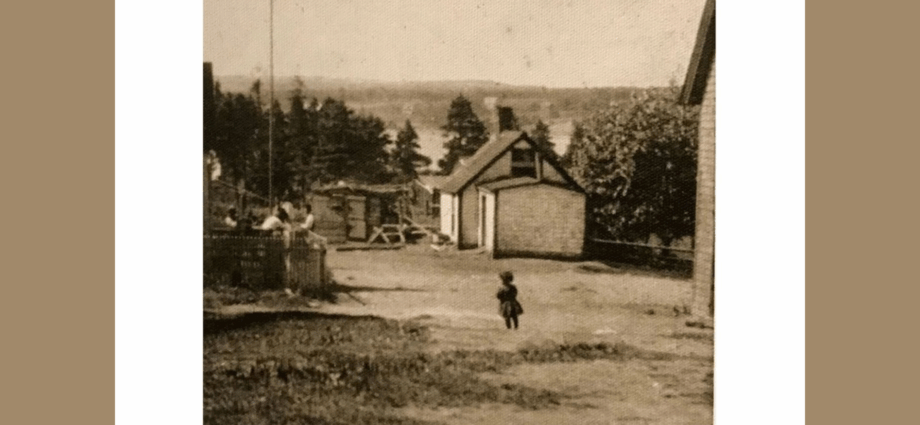
By Rosemary Godin, Local Journalism Initiative Reporter, Cape Breton Post
November 7, 2025
The following condensed information about how the Mi’kmaq of Sydney lost their traditional land on Kings Road has been taken from a document found on the Membertou First Nation website called: “Kings Road Reserve — 100 years Later — The Journey On … The Story of Membertou’s Reconciliation.”
In 1877, a wealthy lawyer and member of Parliament named Joseph A. Gillies, purchased the land next to the reserve known as Kun’tewiktuk on Kings Road in Sydney and started a campaign against the Mi’kmaq of Kings Road. For the next 40 years, he and the Sydney municipality tried to force the Department of Indian Affairs to remove the Mi’kmaq from their Kings Road home to somewhere outside the city limits and “away from the general public.”
Through all the persecution, the residents of Kings Road Reserve refused to move, but offered compromises Indian Affairs was unwilling to meet.
For many years, government officials could not offer a suitable location for a new community to build upon.
REFUSE TO SURRENDER HOMES
From 1901 to 1915, the City of Sydney and Gillies aggressively worked to remove the Mi’kmaq of Kings Road by petitioning all levels of government but were continuously rejected by Mi’kmaq refusing to surrender their homes.
The Inspector of Indian Agencies and Reserves reported to Ottawa that the present and former Indian Agent believed the Mi’kmaq should stay on Kings Road. Their concern was that if relocated, the community would “degrade” at a rapid rate, but Gillies persisted.
Gillies eventually worked for legislation to be enacted so that the Department could deal with this case should the Mi’kmaq prove “unreasonable” in their consent to surrender the land.
Around 1912, Indian Agency inspectors and superintendents visited Kun’tewiktuk and attempted negotiations with Chief Joe Julien to find a “suitable solution for everyone.”
No resolution was found.
But unfortunately, amendments to the federal Indian Act were made that same year permitting the “removal of Indians, whose reserve was located within the city, and had a population of less than 8,000 people.”
On April 11, 1913, Frank Pedley, the deputy superintendent general Indian Affairs, sent surrender forms to Father R.L. MacDonald, the Indian Agent at St. Peter’s, instructing him to take a surrender of Kings Road from the Mi’kmaq.
CITY COUNCIL
In 1915, after 37 years of lobbying the government to relocate Kun’tewiktuk, Joseph Gillies took his campaign to the Sydney City Council. On Feb. 11, 1915, city council passed a resolution requesting the federal government to immediately take the necessary steps to remove the Mi’kmaq, declaring: “…the said reservation, occupied as it is by over 20 families of the Micmac Tribe, has the most damaging and injurious effect upon all properties adjacent thereto. …Therefore, be it resolved that the Government of Canada is hereby respectfully requested to immediately take the necessary steps for the removal of the Indians from their present location upon Kings Road.”
Gillies appeared before the council in support for the resolution. Only one voice was raised in favour of the position of the Mi’kmaq of Kings Road — the deputy superintendent general. “I am afraid I cannot agree with Mr. Gillies that this band of Indians, who do not want to move, should be evicted to suit him.”
On April 24, 1915, relying on the amendment to the Indian Act, the superintendent general of Indian Affairs recommended to the Governor General that the Kings Road issue be directed to a judge of the Exchequer Court. The matter was heard in Sydney for five days in September 1915 and the decision of the court was rendered on March 15, 1916.
The court recommended the community be moved, the government agreed, and it ordered the Kings Road Mi’kmaq be moved from their homes.
For the next four years following the Exchequer Court’s decision, the Mi’kmaq remained at Kings Road, as a suitable new location was not identified, and the cost was deemed a burden for the government until the end of the First World War.

A piece of property consisting of 65 acres was purchased in 1925 by the Department of Indian Affairs from Dr. Arthur Kendall on St. Peters Road in Sydney for $5,000.
Housing construction began in 1926 and the families began to move to what is now known as Membertou. The last family moved in 1928.
Subscribe to our newsletter.
Rosemary Godin is the Local Journalism Initiative reporter for the Cape Breton Post, an initiative funded by the federal government.

